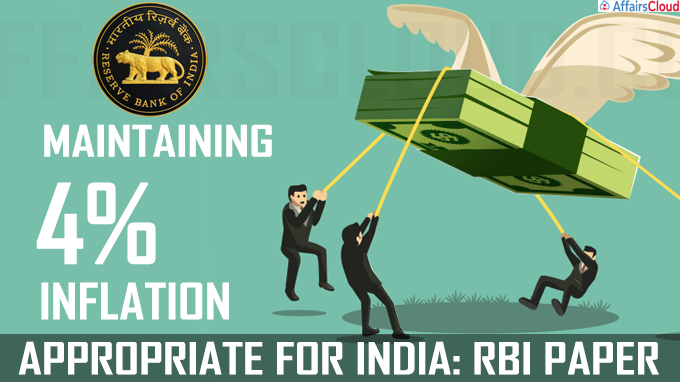 In accordance with the paper authored by Reserve Bank of India (RBI) Deputy Governor Michael Debabrata Patra and another official Harendra Kumar Behera, maintaining an inflation rate of 4% is appropriate for India.
In accordance with the paper authored by Reserve Bank of India (RBI) Deputy Governor Michael Debabrata Patra and another official Harendra Kumar Behera, maintaining an inflation rate of 4% is appropriate for India.
- A lower rate could impart deflationary bias to the monetary policy while a higher trend renders monetary policy too expansionary and prone to inflationary shocks.
- As per the paper, there is a steady decline in trend inflation to 4.1-4.3% since 2014.
- It should be noted that the views expressed in the paper are of the authors and not of the RBI.
Key Points:
–Section 45ZA of the RBI Act, 1934 mandates that the Central Government in consultation with the RBI determine the inflation target once in every five years.
–Now, the inflation target has to be reviewed by end-March 2021.
Background:
In a bid to keep inflation under specified level, the government in 2016 had decided to set up six-member Monetary Policy Committee (MPC) headed by the RBI Governor.
- In October 2016, the panel was given the mandate to maintain annual inflation at 4% until March 31, 2021, with an upper tolerance of 6% and lower tolerance of 2%.
Recent Related News:
i.On September 30, 2020 The Reserve Bank of India (RBI), in consultation with the Government of India (GoI) has fixed Rs 1,25,000 crore as the Ways and Means Advances (WMA) limit for the 2nd half of the financial year(FY) 2020-21, i.e., October 2020 to March 2021.
ii.RBI also extended the enhanced borrowing facility provided to banks under the marginal standing facility (MSF) scheme by six months till March 31, 2021. It was initially available up to June 30, 2020 and was later extended up to September 30, 2020 due to economic disruptions amid COVID-19.
About Reserve Bank of India (RBI):
Headquarters– Mumbai, Maharashtra
Formation– 1 April 1935
Governor– Shaktikanta Das
Deputy Governors– 4 (Bibhu Prasad Kanungo, Mahesh Kumar Jain, Michael Debabrata Patra, and M. Rajeshwar Rao).




